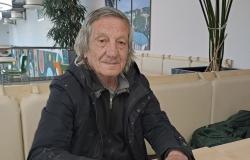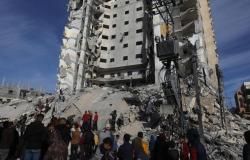“All radar companies in the world are old mastodons from the USA, Germany or Finland with minimal innovations,” Michal Najman, owner of Meteopress, told Novinkám.
How did they get to the development of radars? Years ago, the company started preparing a warning message for clients of insurance companies that dangerous weather is coming to the area where they live. However, quality data was not available and the radar was financially unaffordable.
“So we connected to the ship’s radar. We started taking data from it, learning to work with it. Then we made our own antennas, and in 2019 I got a crucial reinforcement to the company, technical director Jan Hrach, who is a purebred hacker from the Brmlab laboratory,” said Najman.
A Bavarian municipality purchased a speed radar for 100,000 euros. In eleven days she had her investment back
Cocktail
First, he was supposed to improve the existing radar, which he stopped enjoying after half a year. “He told me he had an idea for a new product where he would use a computer and a software-defined radio,” described the head of Meteopress.
We were the first to build a fully functional solid state weather radar
The way it works is that the computer generates a signal and the ones and zeros become a weak radar wave in the radio. For this they needed an amplifier, choosing a special type in which nothing moves and the signal is amplified by a special transistor. “We were the first to build such a fully functional solid state weather radar. At that moment, we had something that turned the market upside down,” Najman described.
Photo: Meteopress
Radar by Meteopress (illustrative image)
Then he paid for an advertisement in a professional magazine, which reaches the desks of tens of thousands of directors of meteorological institutes around the world. In it he described how radar works.
“To my surprise, the director of radars at the Australian Meteorological Institute, Bryan Hodge, called in a few weeks. He wrote that in the ad we are describing a product that he has been trying to explain to the market for fifteen years. And everyone tells him it can’t be done,” Najman described.
Summer weather in Europe can be predicted from the rate of melting of the Greenland ice sheet
Science and schools

Meteopress then went through the selection process of the Hodge Institute, which it won. In July 2022, four months after the order, it installed the radar at Brisbane Airport.
The company with forty-five employees, which has a development center in Prague and assembles radars in Ústí nad Labem, then won tenders in Ghana or Brazil and is now participating in fifteen competitions for the supply of another thirty to forty radars. He can produce one in a week, the capacity is fifty radars per year.
“If we sold them in 20 years, we’d be the biggest weather radar company in the world,” Najman said.
Strong signal and low consumption
How does Czech radar differ from others? First, it is the mentioned amplifier. The competition, according to Najman, uses magnetrons and klystrons, complex devices where a wave is generated by resonating an iron piece of equipment with electricity.
“However, the device wears out a lot and the magnetron needs to be replaced every three years, the klystron every five years. Our amplifier maybe ten, fifteen years from now,” he explained.

Photo: Meteopress
The Meteopress team at the radar in Brisbane, Australia
The radar also generates signals using software, and all components are similarly controlled.
“You can communicate with them remotely. When we had a minor problem with the radiator in Australia, we detected it before it became operational. Colleagues underclocked the processor so that it didn’t need to cool as much, and the technician replaced the cooler on the spot within ten minutes,” Najman described.
AI is developing faster than we can understand it, say schools. Instructions are coming
Software

Another advantage is that the data processing is located on the back of the antenna. “Competitors run the radar waves down to the server room where they process them,” he explained. However, components worth hundreds of thousands of euros are needed for this. In addition, the waveguides leading up and down the tower can be up to fifty meters long, and a lot of signal is lost along the way.
“By processing the signal directly on the antenna, we get three to four decibels, which is the equivalent of a twice as strong radar,” added Najman. Another advantage is that the radar has low power consumption.
“That was not the purpose, we only found out afterwards. The consumption of the radar is only 500 watts. Twelve photovoltaic panels and a battery are enough for power. With this, we can operate it continuously anywhere in the world,” he added.
Too cheap?
At first, Najman got burned when setting the price of the radar – paradoxically, it was too cheap. “When I used cost and profit markup, I failed in the market because customers thought the price was too low and they didn’t believe in the product,” described the man, nicknamed Elon Musk by those around him.
“So I had to set the price using the market expectations method. He expected the radar to cost about a million dollars. That’s how I approached this price from below,” he added.
And what else? With the help of artificial intelligence, the company focuses on so-called nowcasting, accurate weather forecasts two to five hours ahead, and also plans to measure the atmosphere by drone.
Incredible footage: the aurora borealis over an erupting Icelandic volcano
Science and schools

(Un)justified fear for the planet
Style













